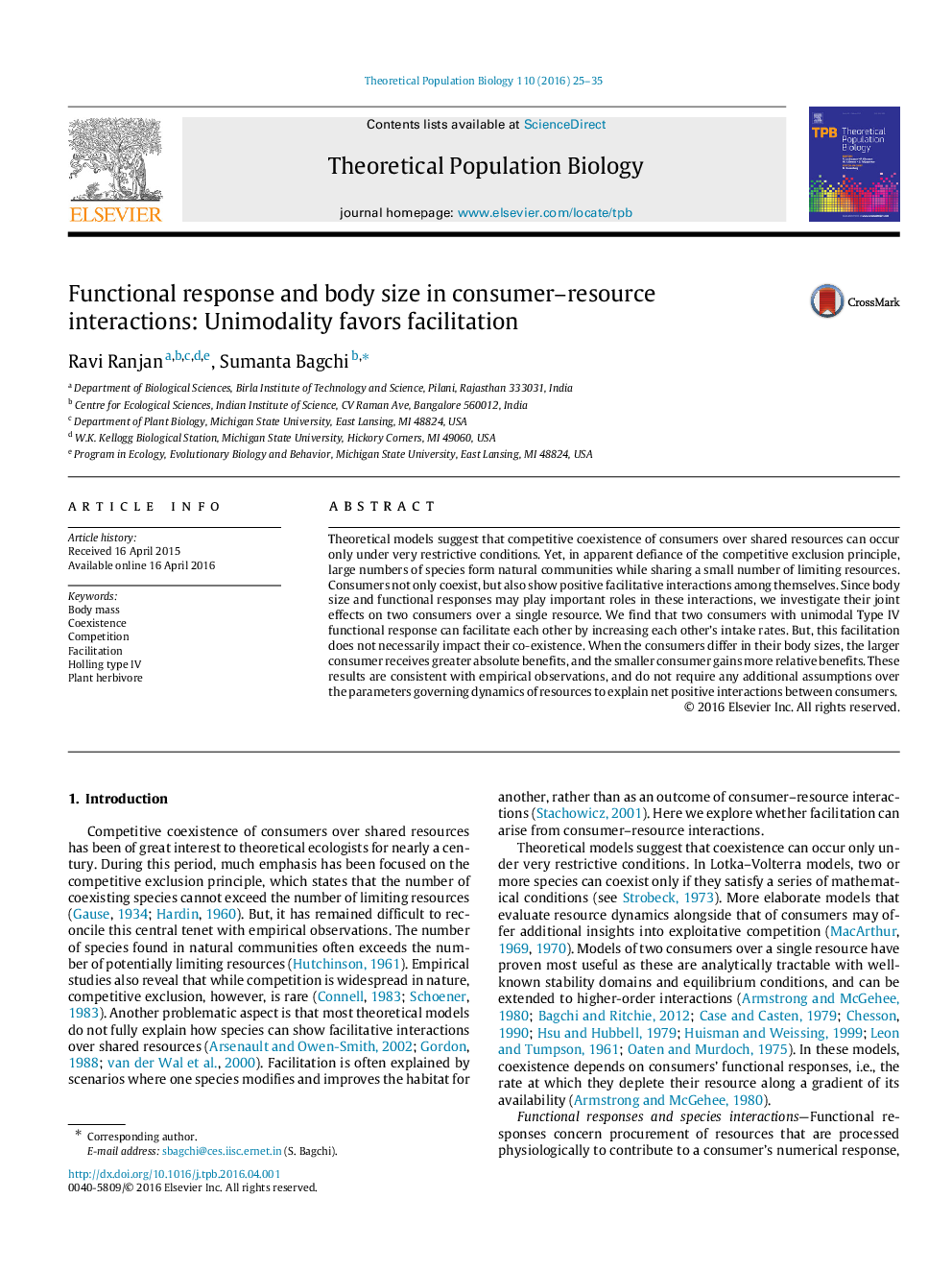| Article ID | Journal | Published Year | Pages | File Type |
|---|---|---|---|---|
| 4502259 | Theoretical Population Biology | 2016 | 11 Pages |
Theoretical models suggest that competitive coexistence of consumers over shared resources can occur only under very restrictive conditions. Yet, in apparent defiance of the competitive exclusion principle, large numbers of species form natural communities while sharing a small number of limiting resources. Consumers not only coexist, but also show positive facilitative interactions among themselves. Since body size and functional responses may play important roles in these interactions, we investigate their joint effects on two consumers over a single resource. We find that two consumers with unimodal Type IV functional response can facilitate each other by increasing each other’s intake rates. But, this facilitation does not necessarily impact their co-existence. When the consumers differ in their body sizes, the larger consumer receives greater absolute benefits, and the smaller consumer gains more relative benefits. These results are consistent with empirical observations, and do not require any additional assumptions over the parameters governing dynamics of resources to explain net positive interactions between consumers.
